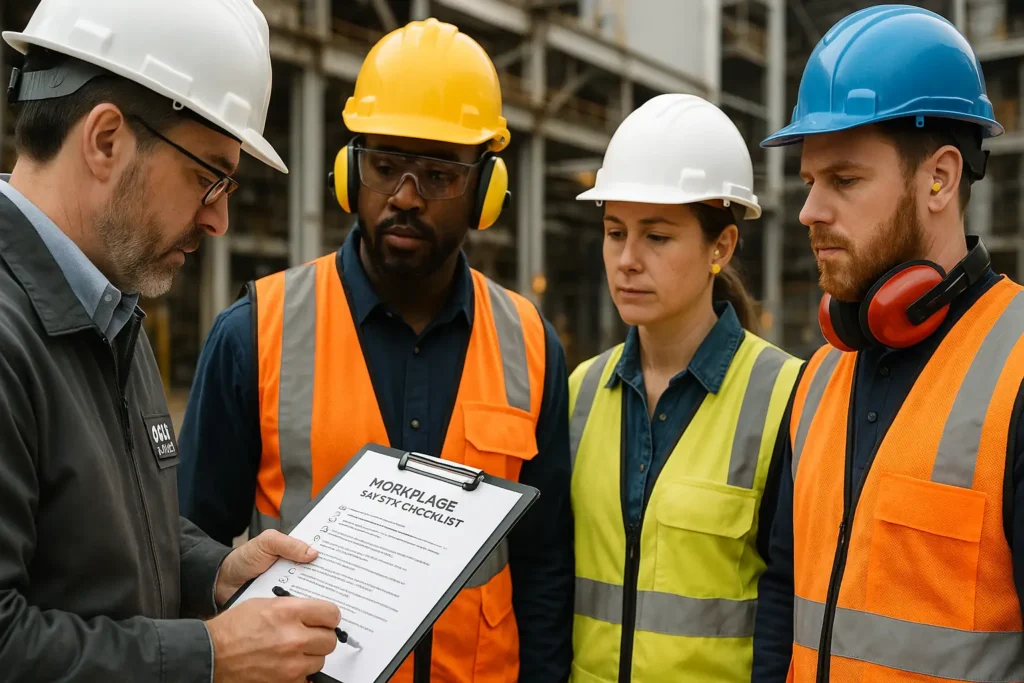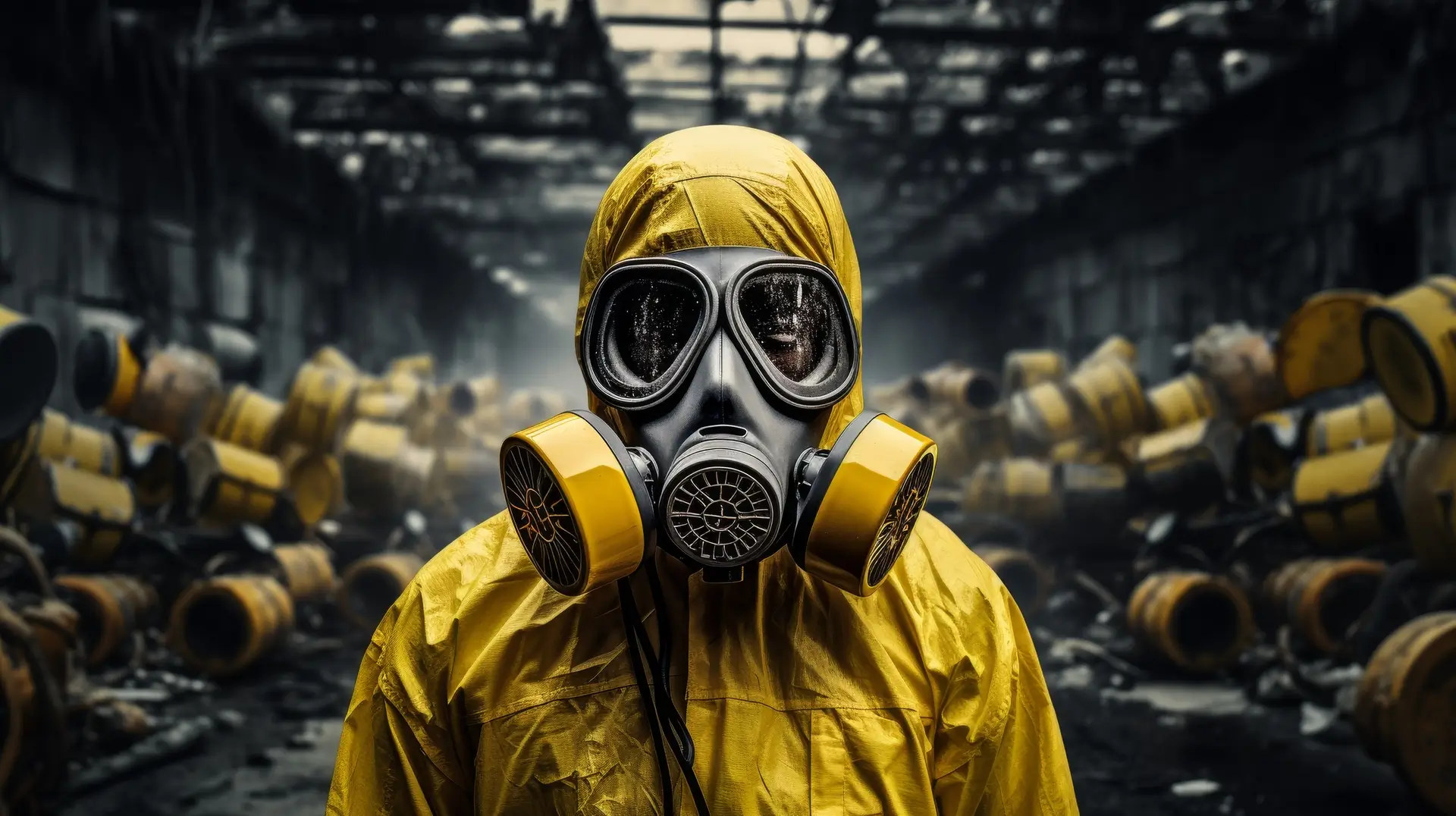What is Industrial Hygiene? (Is Your Job Making You Sick?)
That question might sound dramatic, but it’s more common than many realize. According to the U.S. Bureau of Labor Statistics, over 2.8 million nonfatal workplace injuries and illnesses were reported in 2022 by private industry employers in the U.S. Many of these issues are linked not to dramatic accidents, but to daily exposure to hidden hazards.
From inhaling fumes and dust to repetitive strain or excessive noise, the physical toll of your job might not be obvious—until it’s too late.
That’s where industrial hygiene steps in. This science-based approach enables employers to identify and mitigate workplace conditions that may harm employee health. It’s relevant across industries—from construction and manufacturing to labs, warehouses, and even office environments.
In this blog, we’ll explain what industrial hygiene is, what hazards it addresses, how to recognize symptoms of exposure, and what both employers and workers can do to prevent long-term health effects.
I. What Is Industrial Hygiene?
At its core, industrial hygiene is about anticipating, recognizing, evaluating, and controlling environmental factors in the workplace that may lead to injury or illness. It blends elements of science, engineering, and regulatory adherence to protect worker health.
A practical definition? It’s the science of maintaining healthy and safe workplaces.
Here’s an eye-opening statistic: NIOSH estimates that 22 million U.S. workers are exposed to hazardous noise annually, many of whom develop hearing loss due to inadequate controls. And that’s just one type of risk that industrial hygienists tackle.
Industrial hygiene programs rely on measuring exposure levels, assessing workplace conditions, and implementing effective controls. Whether it’s monitoring air quality or ensuring workers are using personal protective equipment (PPE) properly, industrial hygiene helps create safer environments before illnesses take root.
II. Common Workplace Hazards Addressed by Industrial Hygiene
Industrial hygiene and safety programs are built to deal with a wide variety of workplace hazards, many of which are easy to overlook during day-to-day operations. Here are some key categories:
1. Airborne Contaminants
Dust, fumes, vapors, and mists can damage lungs or trigger chronic respiratory illnesses.
- Example: Welders in fabrication shops often inhale metal fumes unless proper ventilation is in place.
2. Chemical Exposure
Direct contact with hazardous chemicals can cause burns, rashes, or internal harm.
- Example: Janitors and lab techs frequently handle corrosive cleaners and solvents.
3. Noise Hazards
Loud environments—especially over long shifts—can lead to permanent hearing loss.
- Example: Construction workers near jackhammers and power tools are regularly exposed to 90+ dB of noise.
4. Heat and Cold Stress
Extreme conditions reduce performance and can lead to heatstroke or frostbite.
- Example: Roofers working under direct sun without rest breaks or hydration plans.
5. Ergonomic Risks
Poor design of tools or workspaces contributes to repetitive motion injuries.
- Example: Factory workers repeatedly lifting without proper posture develop lower back injuries.
6. Biological Hazards
Viruses, bacteria, and mold can spread in shared spaces or healthcare settings.
- Example: Nurses handling blood samples risk exposure to hepatitis or other pathogens.
A well-managed industrial hygiene program identifies these hazards early and recommends controls to prevent harm.
III. Four Signs Your Job Might Be Making You Sick
If you experience recurring health issues that improve when you’re away from work, that’s a red flag. Here are four common signs that could be linked to poor industrial hygiene controls:
1. Chronic Headaches or Fatigue
These can result from poor indoor air quality, chemical exposure, or excessive noise.
2. Respiratory Issues
Persistent coughing, asthma flare-ups, or wheezing may signal exposure to airborne contaminants.
3. Skin Problems or Eye Irritation
Contact with irritants or allergens in the workplace often causes rashes or eye discomfort.
4. Long-Term Illness
Occupational conditions like asthma, tendonitis, or hearing loss often develop slowly, making them harder to detect until significant damage has occurred.
Many workers normalize these symptoms. But consistent issues should be reported and investigated to protect not just your health, but your coworkers’, too.
IV. Five Ways Employers Can Improve Industrial Hygiene
Creating a culture of safety starts with the employer. A robust industrial hygiene and safety approach involves the following:
1. Conduct Regular Hazard Assessments
This means actively testing for air contaminants, sound levels, and exposure to chemicals. Document and update these assessments regularly.
2. Invest in Engineering Controls
Replace or modify equipment to minimize exposure.
- Examples: installing fume hoods, improving ventilation, or adding noise-dampening barriers
3. Implement Administrative Controls
This includes limiting exposure through smart scheduling, such as rotating shifts or limiting time spent near hazards.
4. Enforce the Use of PPE
Provide workers with quality protective gear like respirators, gloves, and goggles, and ensure it’s used consistently
5. Offer Training and Awareness Sessions
Regular education on hygiene protocols, emergency procedures, and hazard recognition empowers employees to act safely and responsibly.
A formal industrial hygiene program not only protects workers, it also reduces sick leave, enhances morale, and limits regulatory penalties.
V. Four Things You Can Do as a Worker
Even the best employer-driven program needs worker participation. Here are four ways you can help maintain a healthy workplace:
1. Report Symptoms and Unsafe Conditions Promptly
The sooner you speak up, the sooner hazards can be addressed.
2. Attend and Engage in Safety Training
Stay informed. Many injuries occur when people assume they already know the risks.
3. Follow Best Hygiene Practices
Use PPE properly, wash hands frequently, and avoid eating or drinking in contaminated areas.
4. Know Your Rights
Under OSHA and other laws, you have the right to a safe and healthful workplace. You can request inspections or report hazards confidentially without fear of retaliation.
VI. Conclusion
So, is your job making you sick?
Only you can answer that, but if you’ve been ignoring symptoms or unsafe conditions, now is the time to act. Good industrial hygiene practices don’t just prevent illness—they improve job satisfaction, reduce stress, and boost productivity.
Whether you’re an employer developing an industrial hygiene program or a worker trying to stay safe, knowledge is your best tool. A clean, well-ventilated, and well-managed workplace benefits everyone.
Want to take action today?
Visit OSHA’s website for free checklists, training materials, and adherence guides—or speak to a certified industrial hygienist about improving your site conditions.
Related Posts

Training on a Budget? Find OSHA Training at a Low Price

OSHA Winter Safety Tips for 2025: Protect Outdoor Workers


